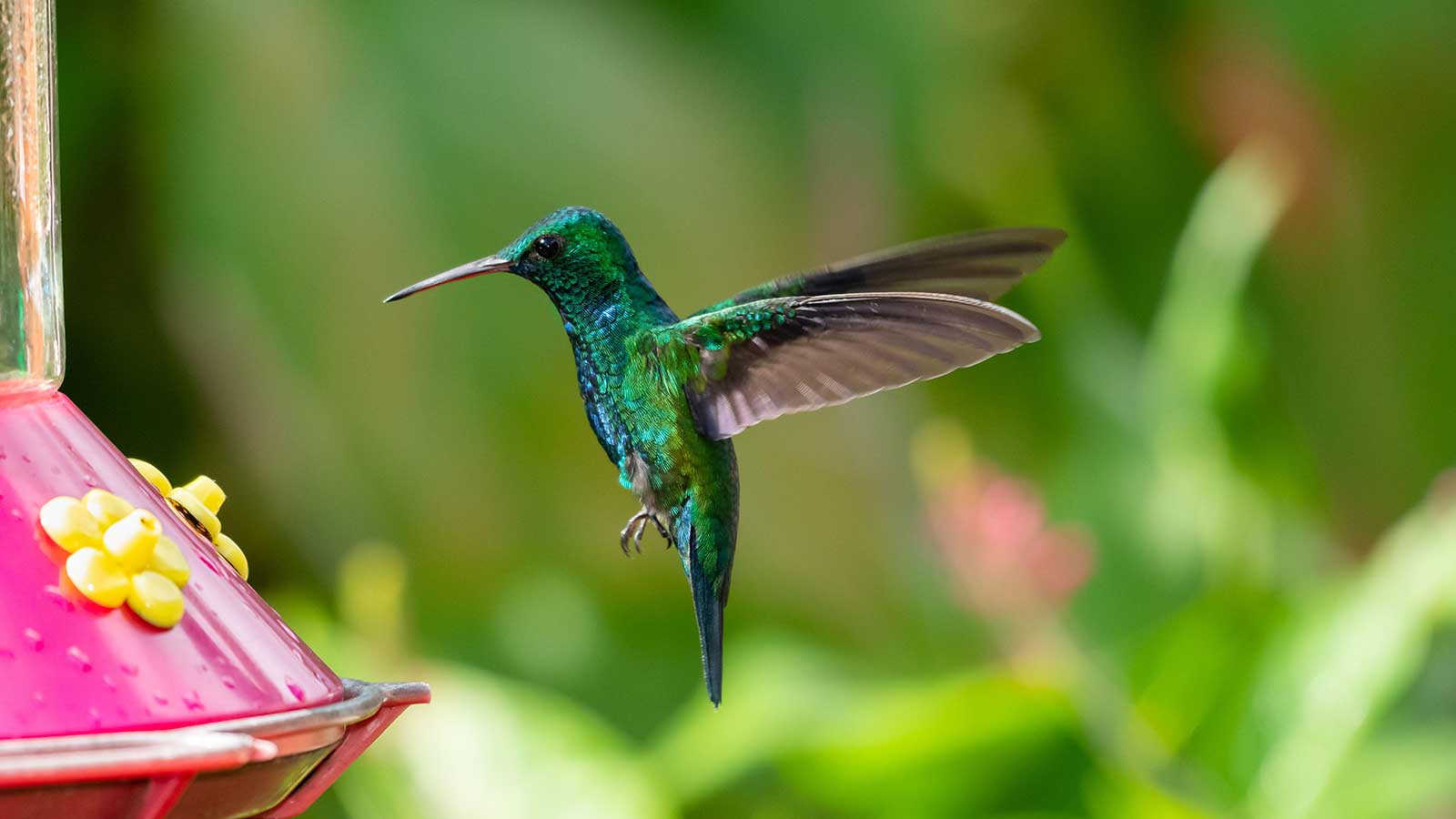
Putting out hummingbird feeders in your yard is a simple way to welcome these colorful creatures into your space, and enjoy the charming scenes as they flit to and fro. However, there are a few common mistakes that are often made during the process. And at their worst, these errors could harm the birds rather than help them.
When attracting hummingbirds to your outdoor space, the most important things to consider are keeping them safe and happy with the right nourishment and a clean environment from which to feed.
We have spoken expert ornithologists and bird enthusiasts to find out how to avoid making any errors that could impact these beautiful birds. Keep these tips in mind – your feathered friends will be much happier and healthier as a result.
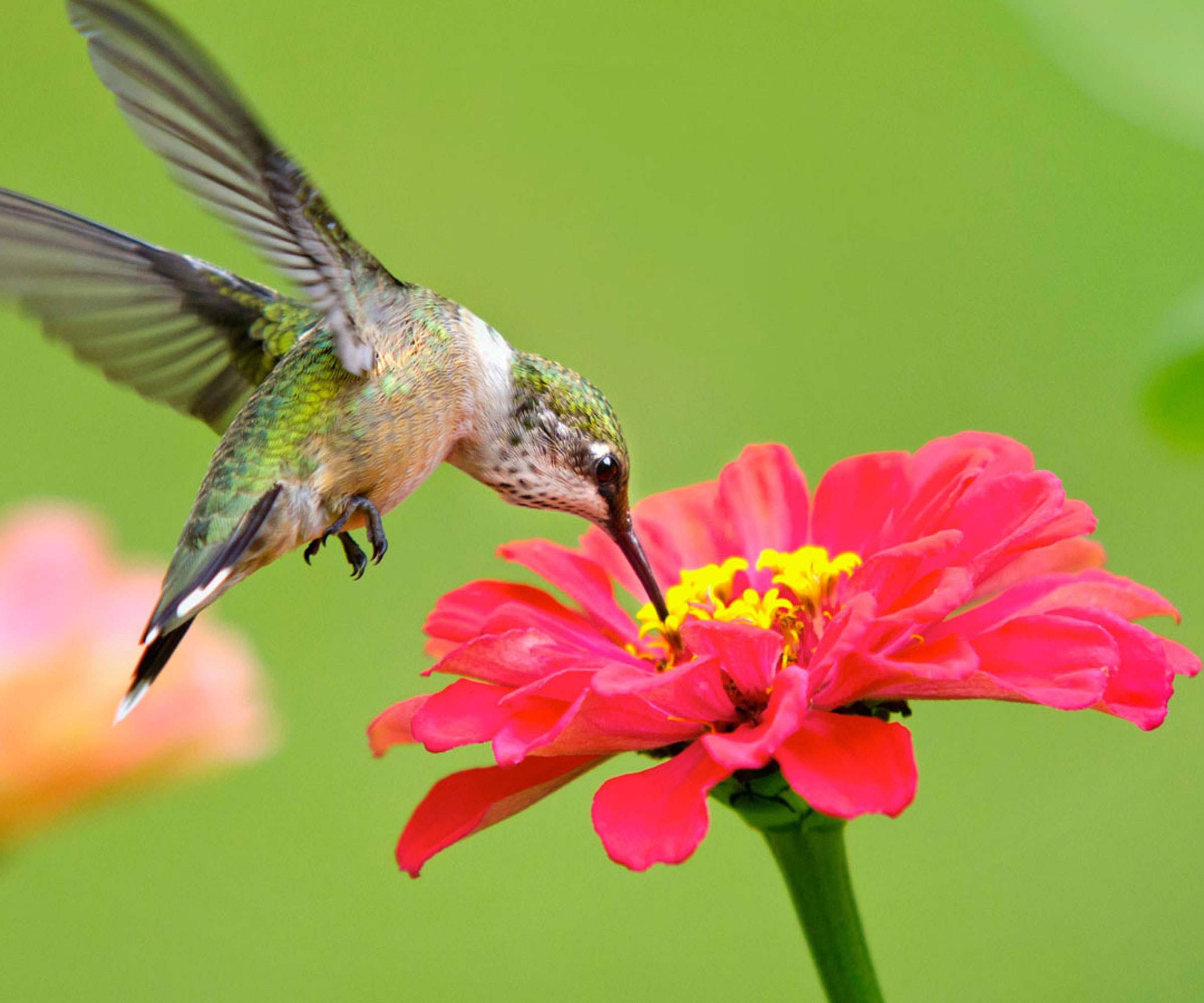
5 mistakes to avoid when feeding hummingbirds in your backyard
Keep your plot wildlife-friendly by steering clear of these five common errors.
1. Adding red dye to hummingbird food
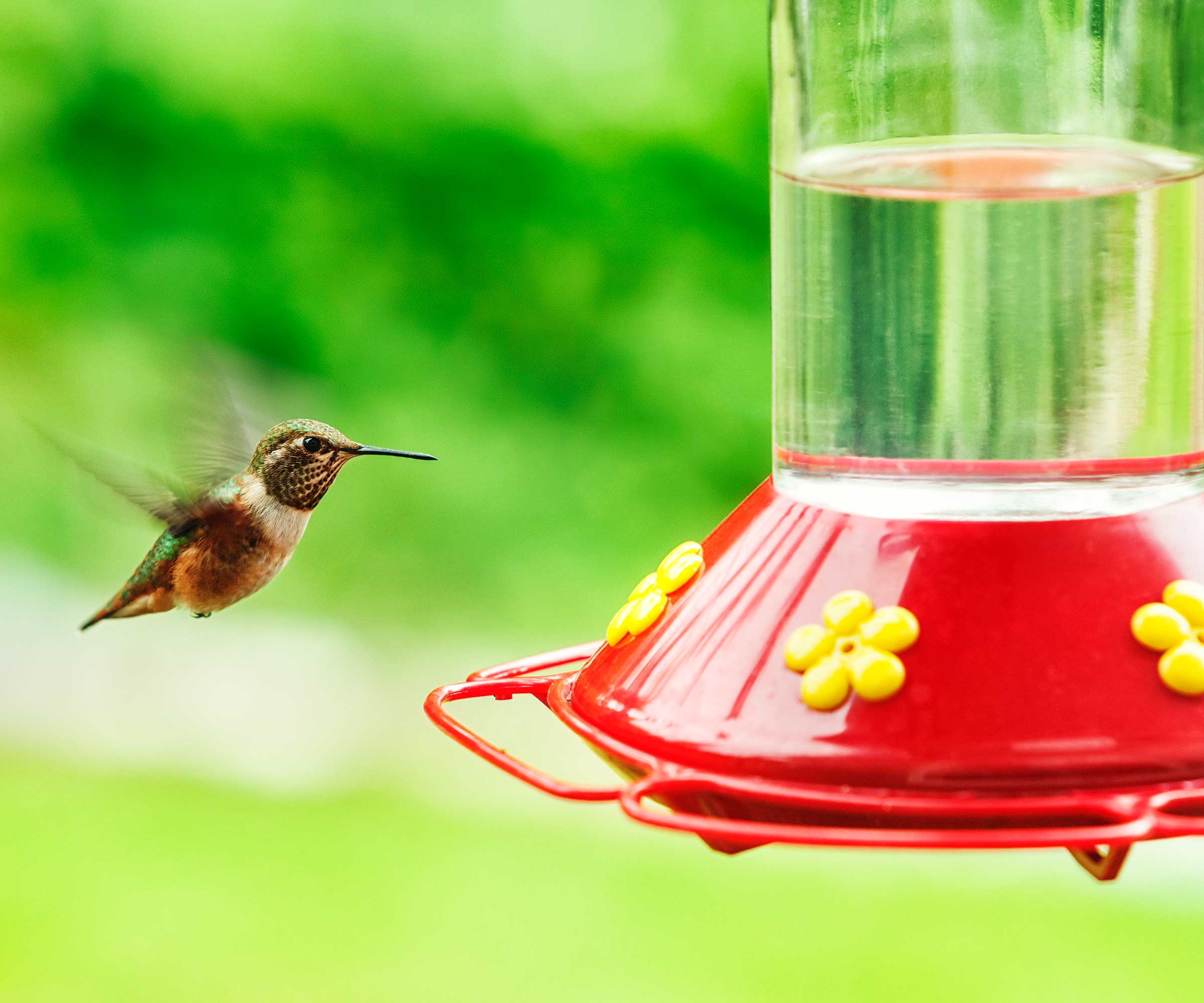
Although it's well-known that hummingbirds are attracted to the color red, adding red dye to their nectar can harm the birds.
Zach Hutchinson, the owner of FlockingAround.com, warns against using hummingbird food dyed red. 'Not only is this dye unnecessary to attract hummingbirds, but it may have long-term impacts detrimental to hummingbird populations,' he says.
Instead, Zach suggests sticking to a basic hummingbird food recipe of granulated white sugar and water, explaining how the resulting concoction is not only safe for hummingbirds but is also the closest drink we can make to replicate the natural nectar provided by flowers. You can choose to buy a red feeder to help attract hummingbirds, such as these featured products below.
The wide mouth of these feeders are easy to clean and fill with water, and the hard clear plastic allows you to monitor nectar levels so you always know when to add nectar.
This hummingbird feeder is made of beautiful blown glass, complete with an ant guard and bee-proof metal base.
This is a high quality nectar glass container with six flower shaped feeding ports to accommodate multiple hummingbirds.
2. Using the wrong type of sugar in hummingbird nectar
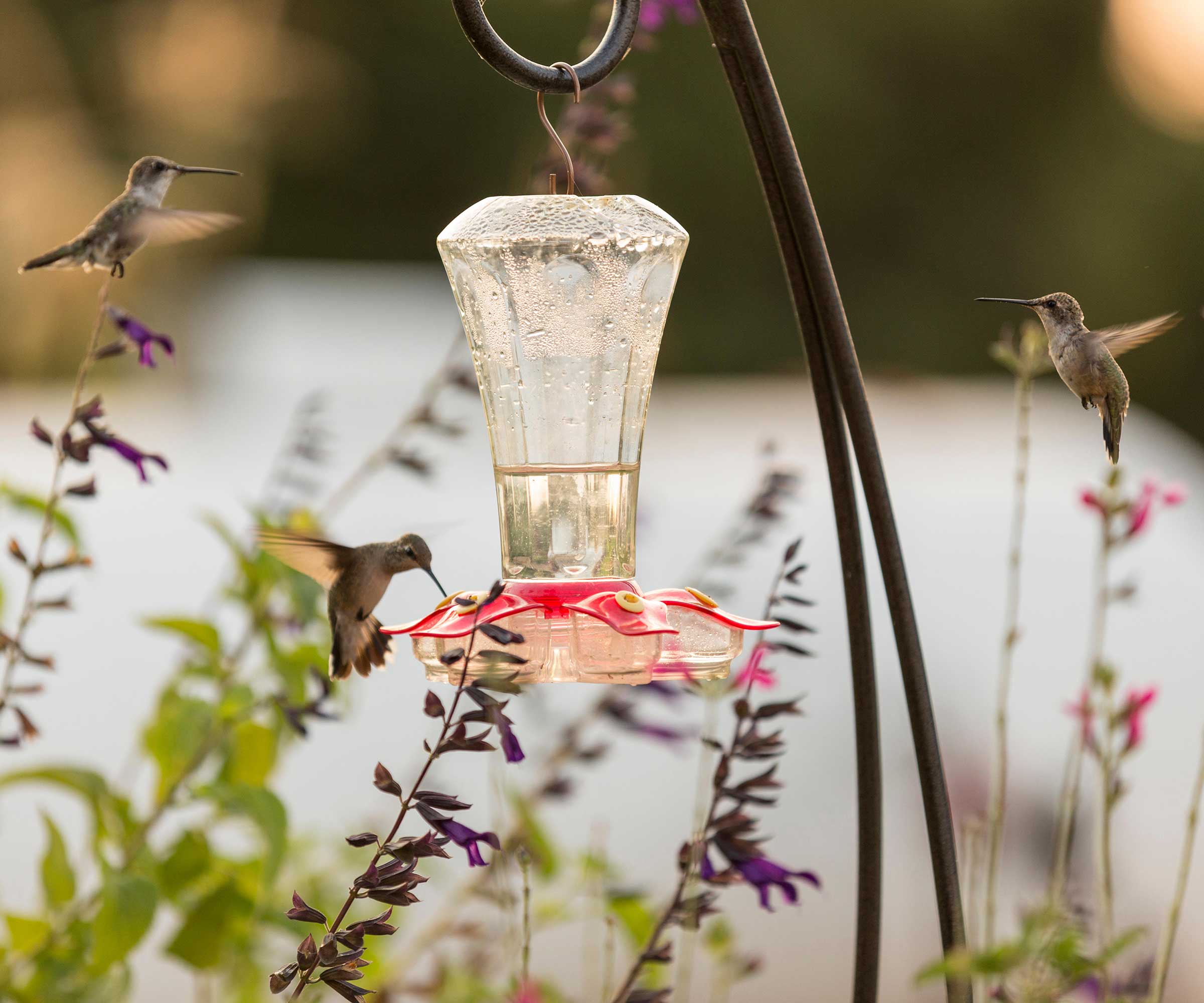
Adding honey or brown sugar to your hummingbirds' food is another no-go, as they can't be digested efficiently by the birds.
Kelsey Waddell of WildBirdScoop.com agrees, advising to only use white sugar when making hummingbird food. 'Brown sugar is made by adding molasses to white sugar, and molasses has a high iron content,' she explains. 'While iron is good for humans and even birds in tiny amounts, it can be toxic to hummingbirds in larger amounts. Brown sugar, and other sweeteners with high iron content, can cause health issues and even death in hummingbirds.
'Honey has natural antimicrobial properties, but when it’s diluted with water, it spoils quickly and can promote the growth of harmful bacteria and fungi,' Kelsey continues.
'Honey is also high in natural sugars, which can ferment in your feeder. If hummingbirds consume fermented food, they may become intoxicated or even die. There are other reasons to avoid honey, too: it can attract other insects, is sticky enough to clog up your feeder, and it doesn't provide hummingbirds with the right balance of nutrients.'
3. Leaving feeders out during cold nights
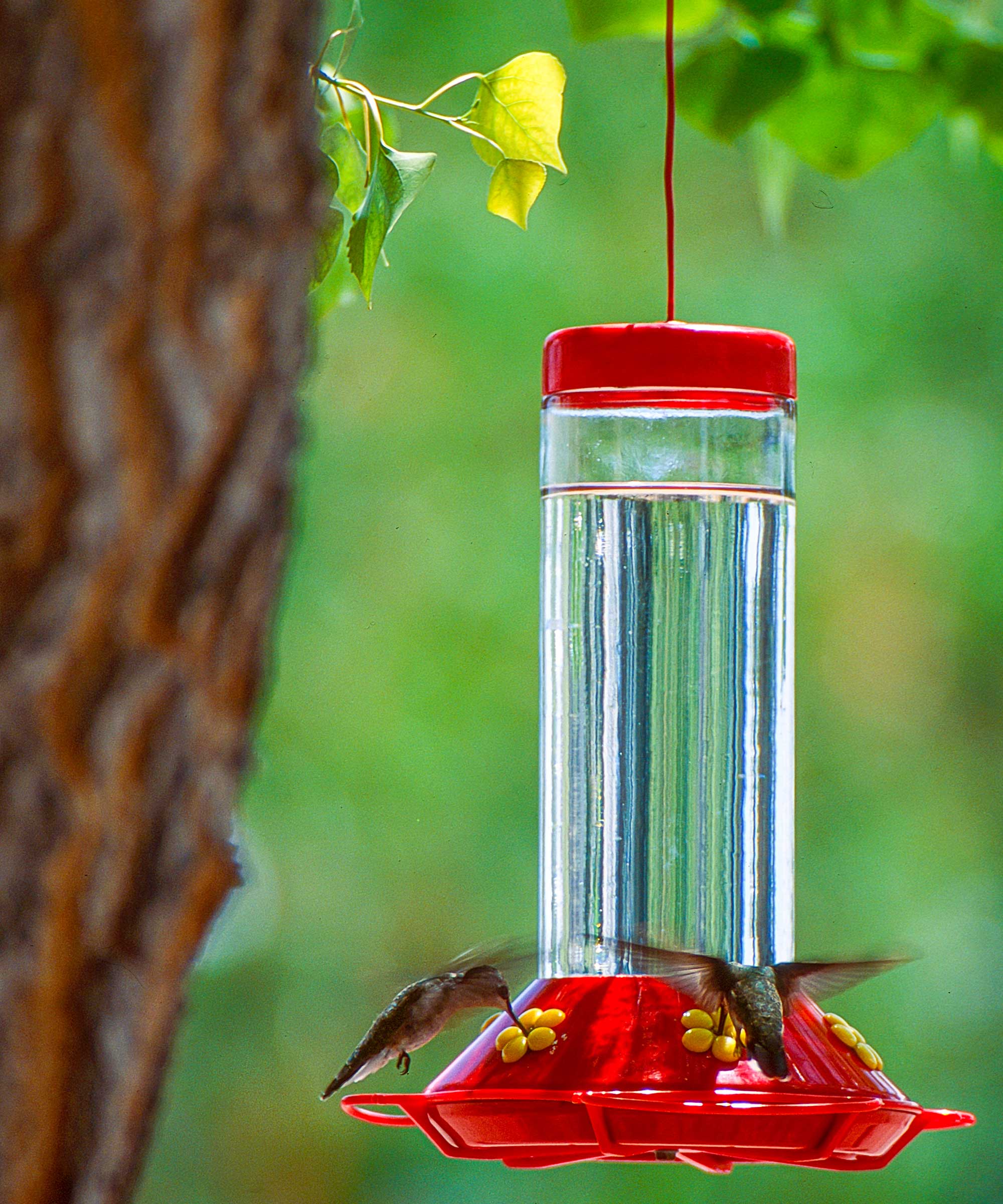
During spring migration, when the first hummingbirds arrive, many who feed hummingbirds will leave their feeders out overnight. The problem with this, as Zach Hutchinson explains, is if the temperature drops, the nectar can freeze and become inaccessible to hummingbirds.
Even if they can still access it, cold nectar can be potentially less-than-helpful as their bodies must then burn calories to help heat it up after it has been consumed.
'This becomes less of an issue as nighttime temperatures rise,' he adds.
4. Forgetting to frequently clean your feeder
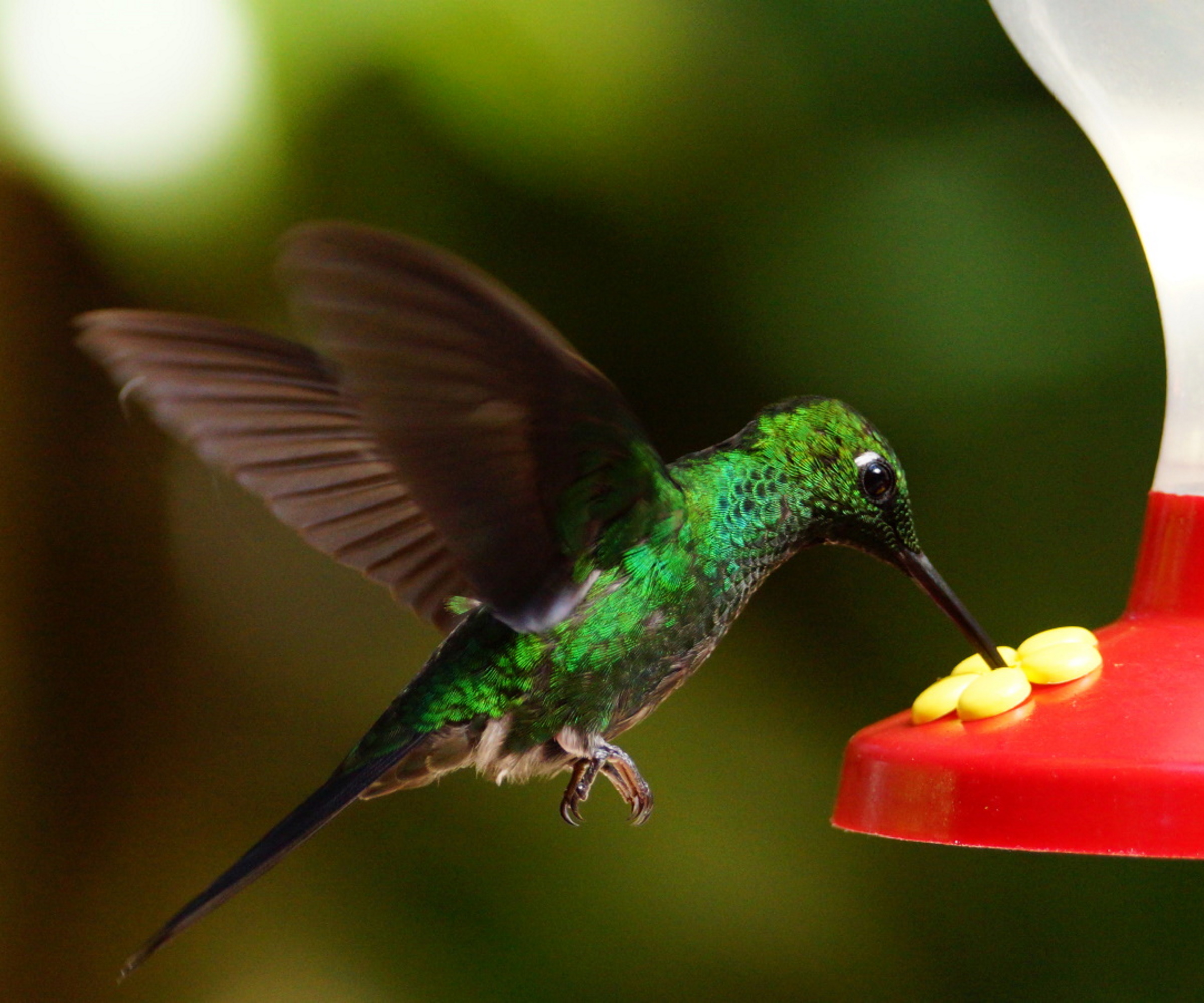
'During the heat of summer, nectar must be replaced every 4-5 days at minimum,' says Zach Hutchinson. This is because the molds and bacteria that will grow in hummingbird food can be dangerous.
'When changing the nectar, it is also essential to clean a hummingbird feeder.' If you use soap or vinegar, a robust and repeated rinsing is necessary – the residues can be harmful if consumed, he adds.
He also advises having a backup feeder to ensure visiting birds don't miss a meal while the other feeder is being cleaned. 'Swap the feeders every time a cleaning is due.'
5. Setting out only one feeder
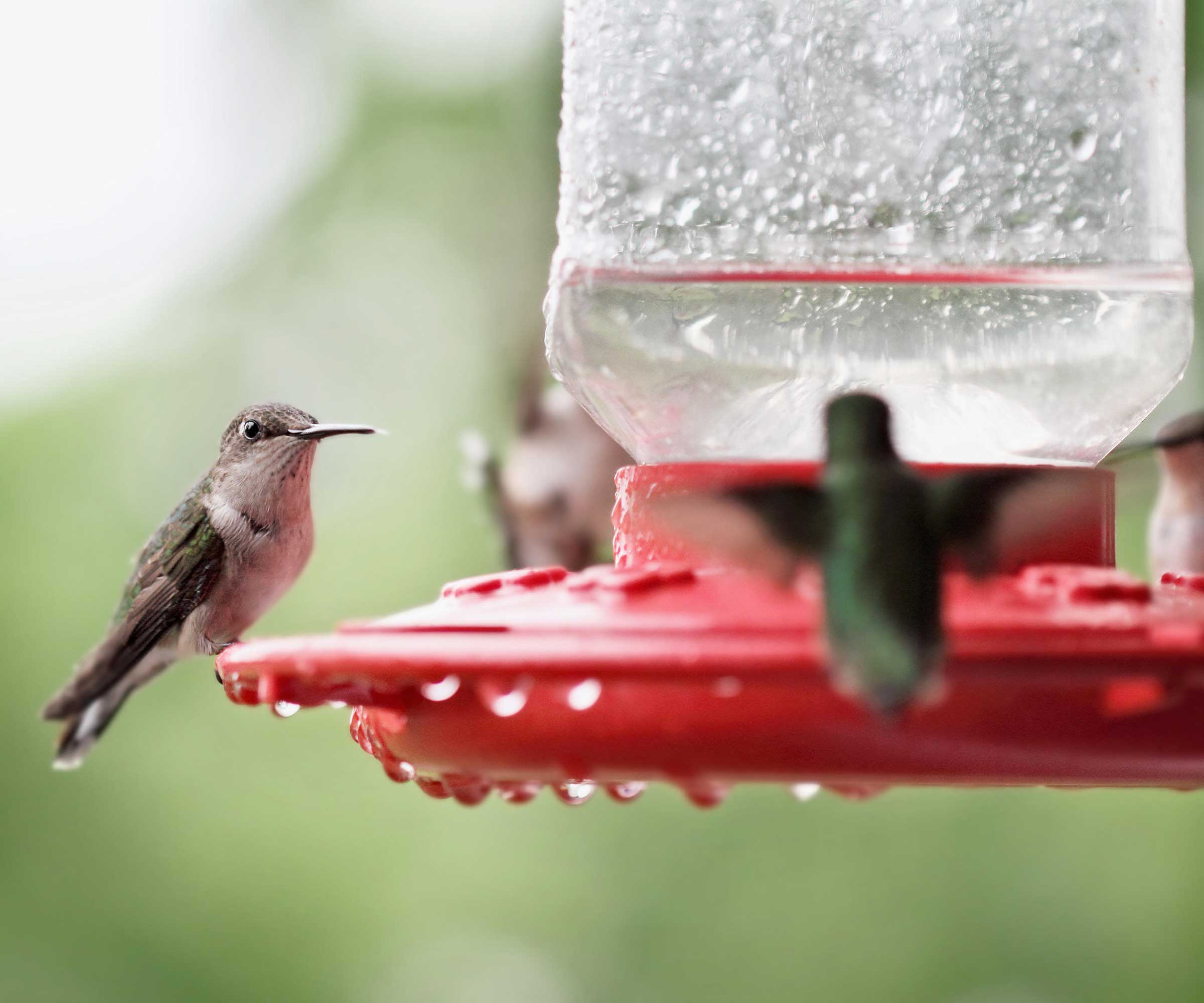
Hummingbirds, no matter how small they are, are very territorial. It's common for male hummingbirds to claim one feeder as their own and aggressively chase other hummingbirds who try to enjoy the nectar.
Having one feeder will keep you from having multiple hummingbird visitors. So, opt for two or more if you can.
Try to place the hummingbird feeders 10 feet apart from each other. This way, you can have other hummingbird visitors while a dominant bird defends his turf.
FAQs
How often should I clean a hummingbird feeder?
Once you've put out your hummingbird feeder, you should try to give it a clean at least once a week. However, in very hot climates, you may need to clean it as often as every 2-3 days, as the heat will cause the nectar to ferment quicker.
As well as putting out feeders, don't forget that there are other ways to attract these wondrous creatures, such as planting flowers that attract hummingbirds. And as a bonus, more blooms will help attract butterflies to your garden, too. You can also stop other birds from using a hummingbird feeder in a number of ways.







